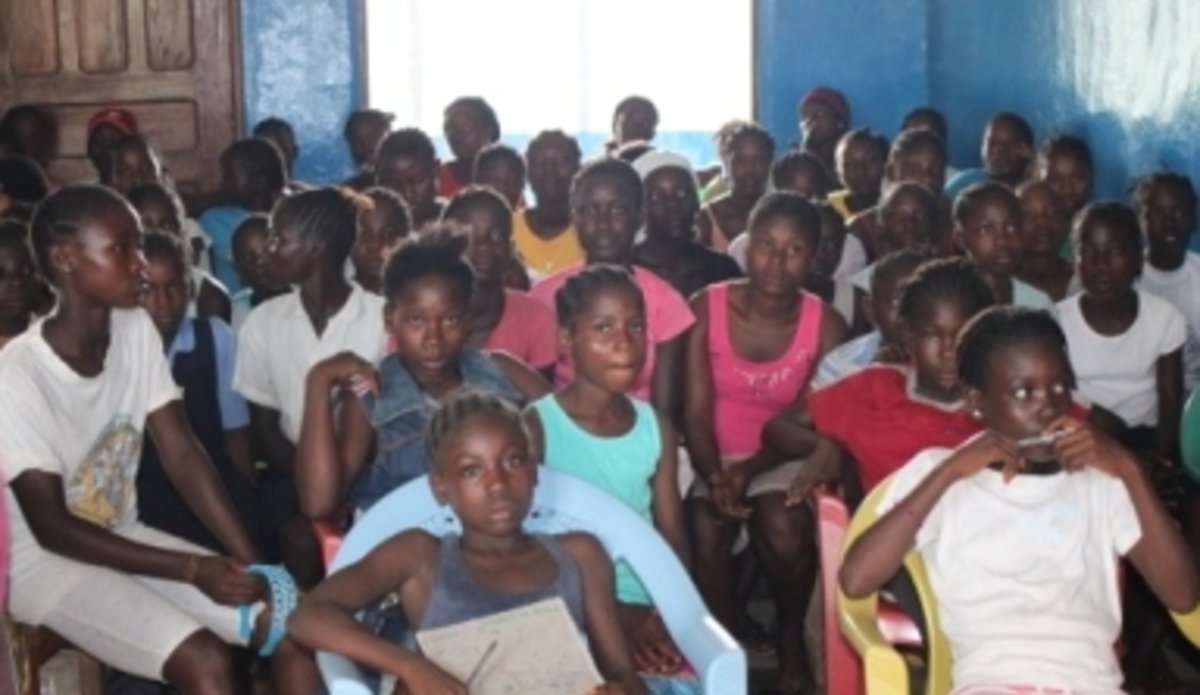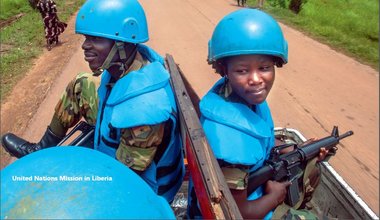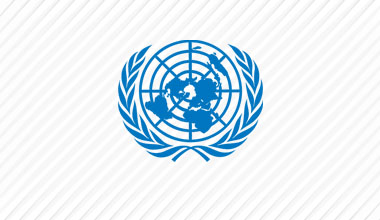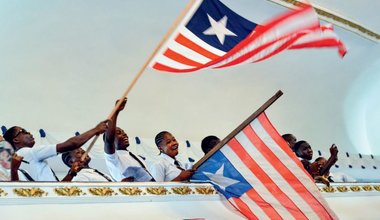Empowering Adolescent Girls
Julie Ballah, 13, held out a portrait of a girl studying under candle light. The portrait was her own handiwork, resulting from a training programme for adolescent girls.
“Due to the Joint Programme on Adolescent Girls Empowerment, I am today able to draw beautiful objects. This picture signifies a young woman’s determination to acquire education,” the teenager told the audience that had gathered at West Point, Monrovia, to see the display of artistic works by the girls benefiting from the empowerment programme.
Like Ballah, at least 500 girls in five communities in Montserrado and Gbarpolu Counties are benefitting from the programme which is a pilot project that involves UNICEF, UN WOMEN, UNFPA, WHO and UNESCO in collaboration with the government of Liberia.
“We are at this stage targeting adolescent girls in hard-to-reach and vulnerable communities in Gbarpolu and Montserrado counties,” Kula Fofanah, Coordinator of the Adolescent Girls Unit at the Ministry of Gender and Development said.
The Programme mixes education, skills training, sexual and reproductive health education as well as conflict resolution and peace building as tools for the empowerment of adolescent girls.
“We want to go all out to help empower these young girls,” Fofanah stressed, applauding the UN for making sexual and reproductive health education a component of the empowerment programme. “We are optimistic that the sexual and reproductive health education will help us address the problem of unintended pregnancy in the country.” According to Fofanah, the rate of unintended pregnancy among adolescent girls in Liberia is a staggering 35 percent.
Lezarnya Weekes, Coordinator of the UN joint Programme on Adolescence Girls Empowerment, is also keen to highlight the importance of sexual and reproductive health education for the girls. “Health is an important entry point because healthy adolescents today will make healthy adults tomorrow. Ensuring that the adolescent girls stay healthy and are not victims of unintended pregnancy could help them become educated and productive citizens,” Weekes points out.
The participation of the benefiting communities in the efforts to empower adolescent girls has been an important highlight of the Joint Programme on Adolescent Girls Empowerment.
“The Community’s participation in this initiative is really crucial to realize the goals of the programme, which are, among other things, to improve the lives and livelihood skills, improve access to reproductive health and to improve the adolescent girls’ knowledge on how to prevent sexual and gender based violence and how to protect them against harmful traditional practices,” Weekes adds.
“The children who are benefitting from this programme have certainly turned a corner in the way they go about their business in the community these days,” says Sarah Tugbeh, an elderly resident of the Monrovia suburb of West Point. “These children are taking their education serious and always setting positive examples for other kids to follow.”
“Every Saturday, these children roam the community with information on how to adopt good hygiene and sanitation practices,” says Robert Kumeh, 45, another resident of West Point. “The children go around telling us to wash our hands whenever we use the wash room as well as before we eat. “
Watta Kollie a resident of Bensonville, Montserrado County, and a mother of two adolescent girls, notes that as a result of the awareness being carried by beneficiaries of the joint programme in her community, she has come to realize that the girl child should have a say whether or not she should be sent to the sande bush [traditional practices school for girls].
“I now know that the sending of the girl child to the sande bush should be something that she should decide on by herself and not us parents forcing her to go there,” Watta pointed out.
Many of the beneficiaries are also full of praise for the programme and the positive transformation it is having on them. “I am now committed to staying in school rather than just going first semester and dropping in the second,” Antoinette Hodge, 14, says.
Like Ballah, whose painting captured the imagination of many of those who witnessed the display, her fellow beneficiaries are also aiming to use the training and opportunities being afforded them to paint
 UN
UN United Nations Peacekeeping
United Nations Peacekeeping





